Last Chance to Catch NYC's Holiday Notalgia Train
We met the voices of the NYC subway on our nostalgia ride this weekend!


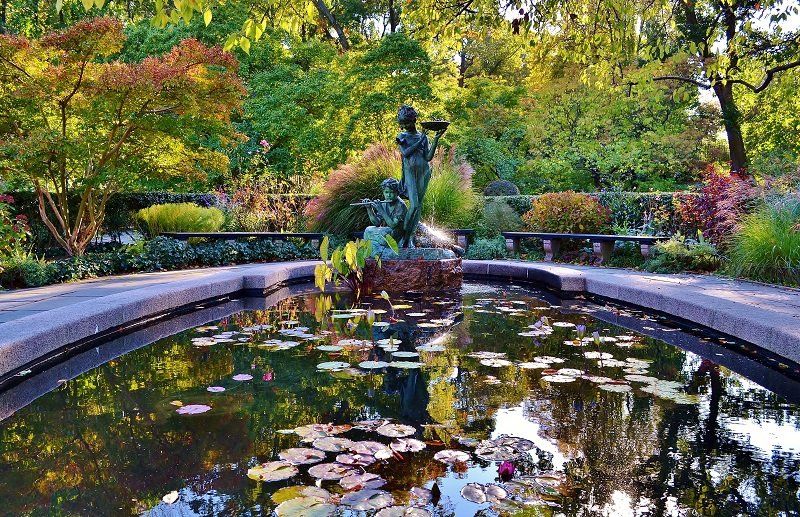
Though there are only a handful of monuments in New York City that are dedicated to real, non-fictional women, more are in the works. In 2019, the City of New York announced the She Built NYC initiative. Seven new monuments dedicated to real women in New York will be placed throughout the five boroughs to honor “trailblazing women whose extraordinary contributions forever changed New York City.”
The women who will get sculptures first are: Billie Holiday, whose career elevated jazz in New York City, will be in Queens. Elizabeth Jennings Graham, whose landmark court case contributed to ending transit segregation in New York City, will be in Manhattan. Dr. Helen Rodríguez Trías, who was the first Latina director of the American Public Health Association and awarded the Presidential Citizens Medal, will be in the Bronx. Katherine Walker, the keeper of the Robbins Reef Lighthouse who saved at least fifty lives in guiding vessels to safety through the channel between Staten Island and New Jersey, will be in Staten Island. A monument to Shirley Chisholm, the first black woman elected to Congress, will be erected in Brooklyn. Meanwhile, here are the current ladies who grace the streets and parks of New York City:
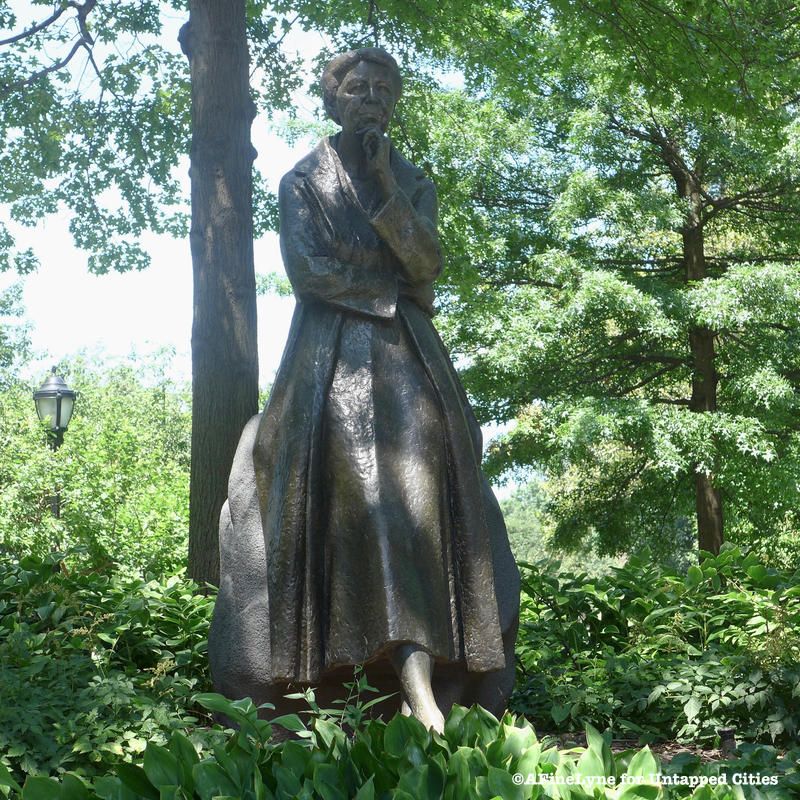
The Eleanor Roosevelt Monument is located in Riverside Park at 72nd street. Sculptor Penelope Jencks dedicated the monument on October 5, 1996 in the presence of the First Lady at the time, Hilary Rodham Clinton. Eleanor Roosevelt involved herself in numerous humanitarian causes such as visiting United States troops abroad, helping the country’s poor, and standing against racial discrimination. The monument was commissioned by the City of New York, the State of New York, and the Eleanor Roosevelt Monument Fund.
Eleanor Roosevelt was a highly active citizen in New York City since her birth and maintained a long presence in this city. In her years before the White House, Eleanor served as a volunteer teacher for impoverished immigrant children at Manhattan’s Rivington Street Settlement House. Eleanor taught American history and literature at a private Manhattan girls’ school in the beginning of her husband’s political career in New York City. You can read about the many apartments that Eleanor lived in (as well as other Roosevelts) here.
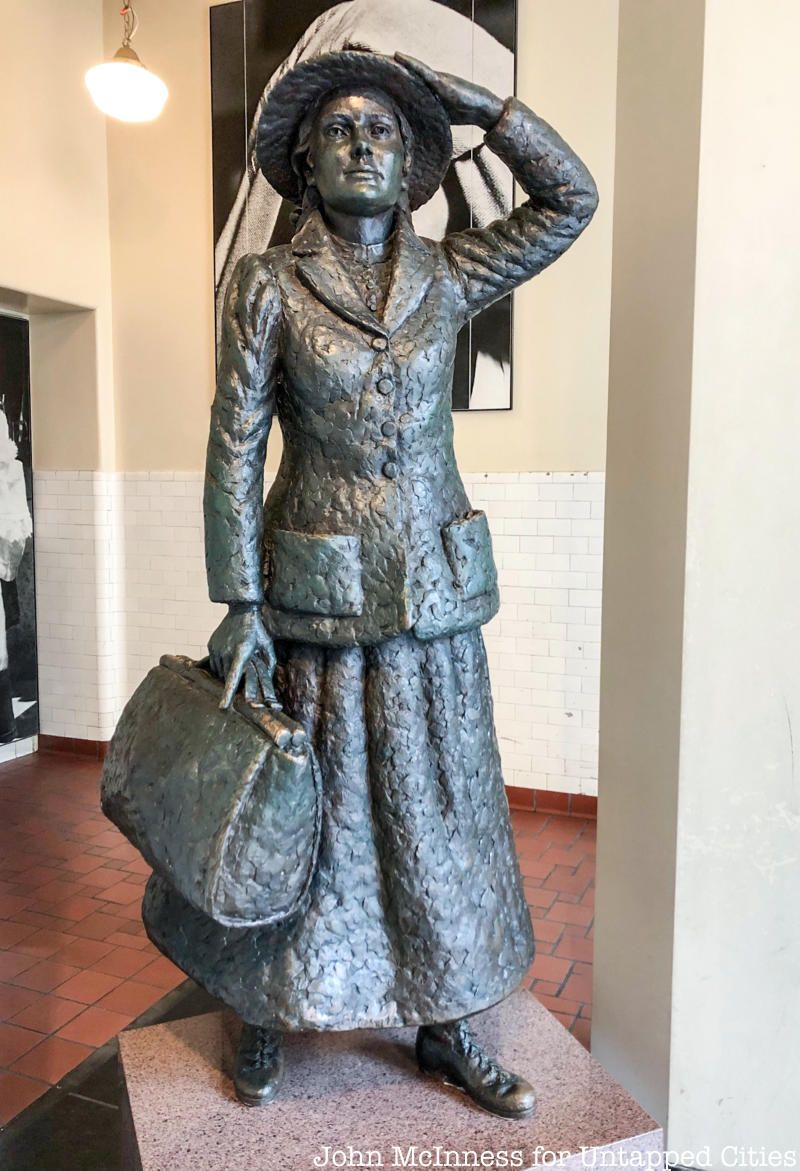
Unbeknownst to most, there is one statue that is not conventionally on the list of sculptures dedicated to women in New York City. The statue pictured above is of Annie Moore, the first immigrant through Ellis Island. Today, there are currently two statues dedicated to Annie Moore in the world: one in Cobh, Ireland at her port of departure and the other at Ellis Island her port of arrival. The statue of Annie Moore on Ellis Island is located inside the Immigration Museum.
Seventeen-year-old Irish girl Annie Moore, was traveling from Ireland with her two younger brothers to reunite with their parents who were already living in New York City. The rest of Annie’s life is said to have been spent entirely on the Lower East Side. You can see Annie Moore before or after a Behind-the-Scenes Hard Hat Tour of the Abandoned Ellis Island Hospital, as your ticket gives you free access to the museum.
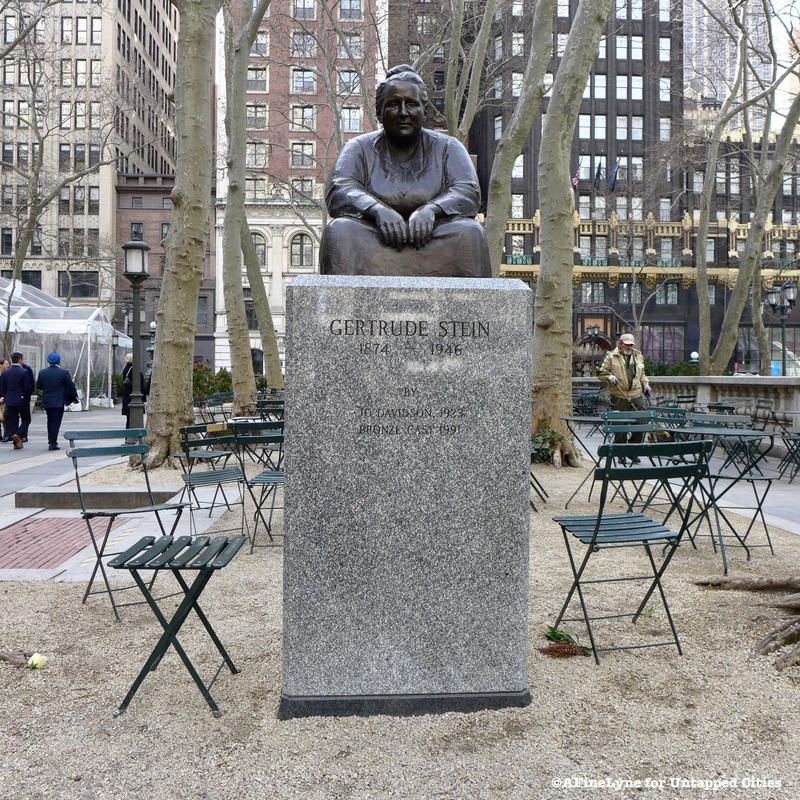
The Gertrude Stein statue is one of five sculptures in Bryant Park. The statue was installed in 1992 and is actually based on a model made by the sculptor, Jo Davidson, in Paris in 1923. The statue’s close proximity to the New York Public Library is reflective of Gertrude Stein’s great literary contributions as an American author and patron of the arts. The sculpture was a gift of Dr. Maury Leibowitz, vice-chairman and president of Knoedler-Modarco Galleries.
Gertrude Stein was a highly esteemed American writer and she is known for incorporating Cubism into her writings. Tender Buttons is one of her well-known works which implements fragmentation and abstraction to an extreme. Stein’s home in Paris doubled as a salon in which she influenced leading artists and writers during the Cubist movement such as Ernest Hemingway and Pablo Picasso.

The Frances Hodgson Burnett Memorial Fountain, a sculpture and fountain of a serene garden, was dedicated in the spring of 1937 to Frances Eliza Hodgson Burnett. It was created by sculptor Bessie Potter Vonnoh and inspired by one of Burnett’s most renown books, The Secret Garden. The intimate scene depicted in bronze is of a girl holding a bowl and a boy playing the flute next to her as they are surrounded by swallows. The scene is based on the characters of Mary and Dickon from The Secret Garden. The fountain is located at the southern end of Conservatory Garden in Central Park, between 103rd and 106th streets along the eastern perimeter of Fifth Avenue.
Frances Eliza Hodgson Burnett was a British-American children’s book author and playwright. Her most famous works include Little Lord Fauntleroy, A Little Princess, and The Secret Garden. After her birth in Manchester, England Burnett’s family immigrated to the United States where she spent most of her life. She lived her last few years in her home on Long Island.
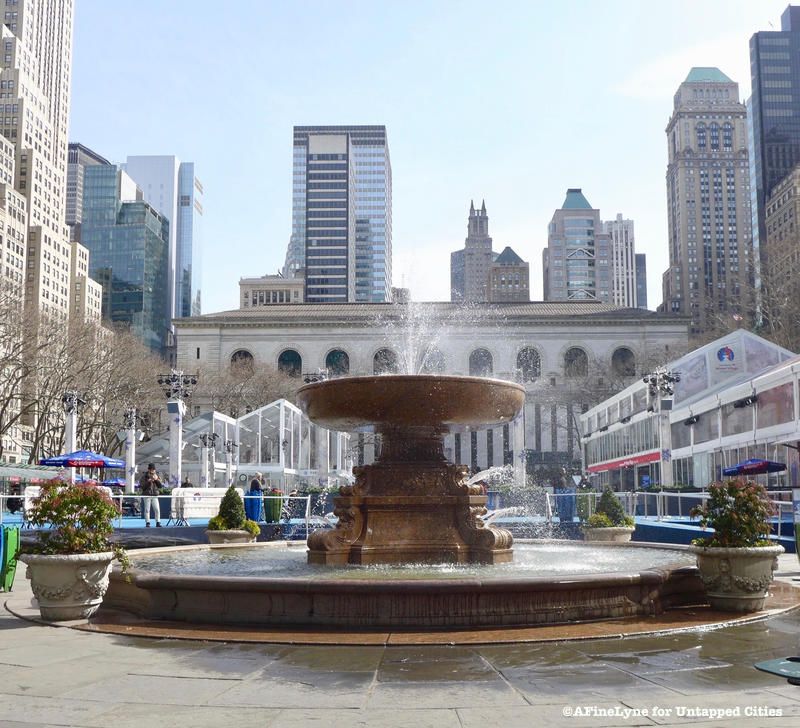
Located in Bryant Park on Sixth Avenue between 40th and 41st streets is the Josephine Shaw Lowell Memorial Fountain, one of the first monuments dedicated to real women in New York City. The black granite fountain was designed by Charles A. Platt and dedicated on May 21, 1912 as a gift from a memorial committee.
Josephine Shaw Lowell was the first woman to have a major monument in New York City created in her honor. Lowell was a social worker, reformer, and the first female member of the New York State Board of Charities, serving from 1876 to 1889. In 1882, Lowell founded the New York Charity Organization Society, a group devoted to the cooperation of charitable agencies. Lowell believed that charity should not only relieve suffering but also help to rehabilitate the recipient.
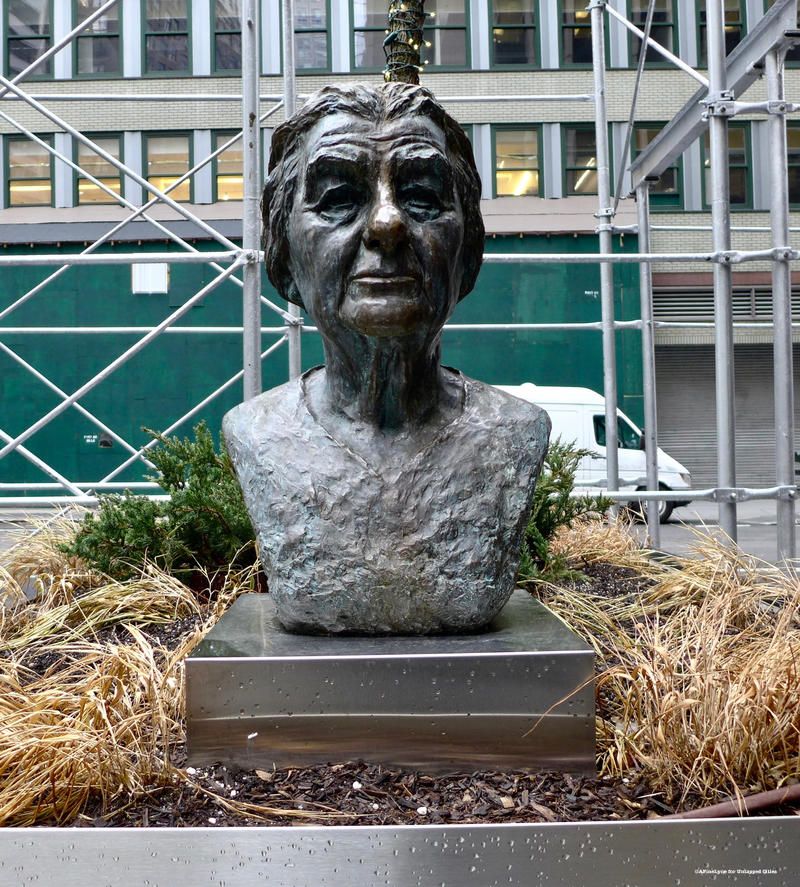
The Golda Meir sculpture is located in Golda Meir Square on Broadway between 39th and 40th streets. The 2x-life size bronze bust was commissioned by the Jewish Community Relations Council of New York City and the City of New York. Created by Beatrice Goldfine, the sculpture is the only tribute of its kind in the United States that is dedicated to Golda Meir. Her sculpture has been moved several times over the years.
Golda Meir helped found the state of Israel and was the fourth Prime Minister of Israel and subsequently, the first woman to hold the title. Her family immigrated to Wisconsin where she became the leader of the Milwaukee Labor Zionist Party. In 1946, when the British arrested and detained many Jewish activists, Meir worked for the release of the Jewish war refugees.
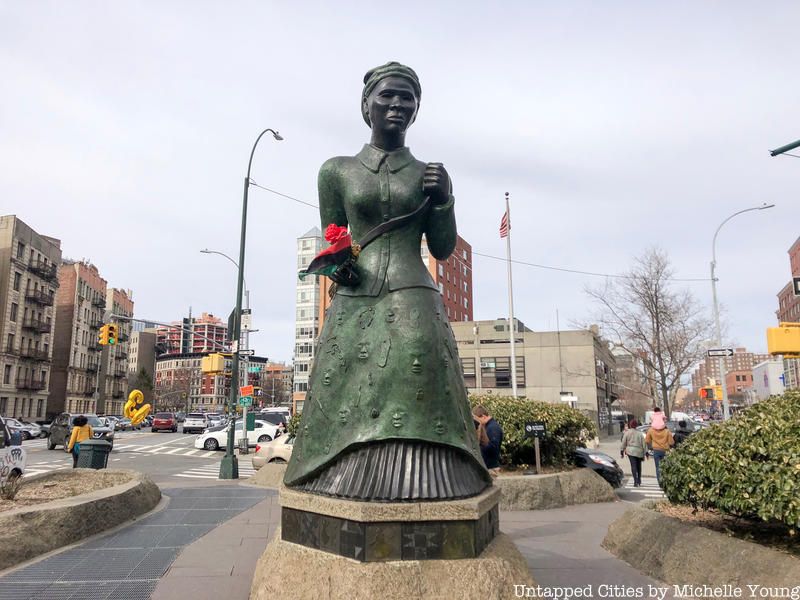
The Harriet Tubman Memorial by African-American artist Alison Saar honors the legacy of the Underground Railroad icon. The granite base of the monument is adorned with bronze tiles that portray events in Tubman’s life and traditional quilt patterns of her culture. Faces are depicted on the skirt of Harriet Tubman, representing the anonymous passengers of the Underground Railroad. Some of the faces are actually inspired by West African “passport masks” which were used as powerful charms that would protect their owners during travel. Commissioned by Department of Cultural Affairs’ Percent for Art program, Swing Low stands at the crossroads of St. Nicholas Avenue, West 122nd Street and Frederick Douglass Boulevard in Harlem.
Harriet Tubman is renown for her fight against the abolition of slavery. The memorial is meant to show Harriet Tubman not as a “conductor” of the Underground Railroad but as the actual locomotive: an indomitable force for her cause. Born into slavery, Tubman escaped and then risked her life in order to help other slaves make the trip to freedom.
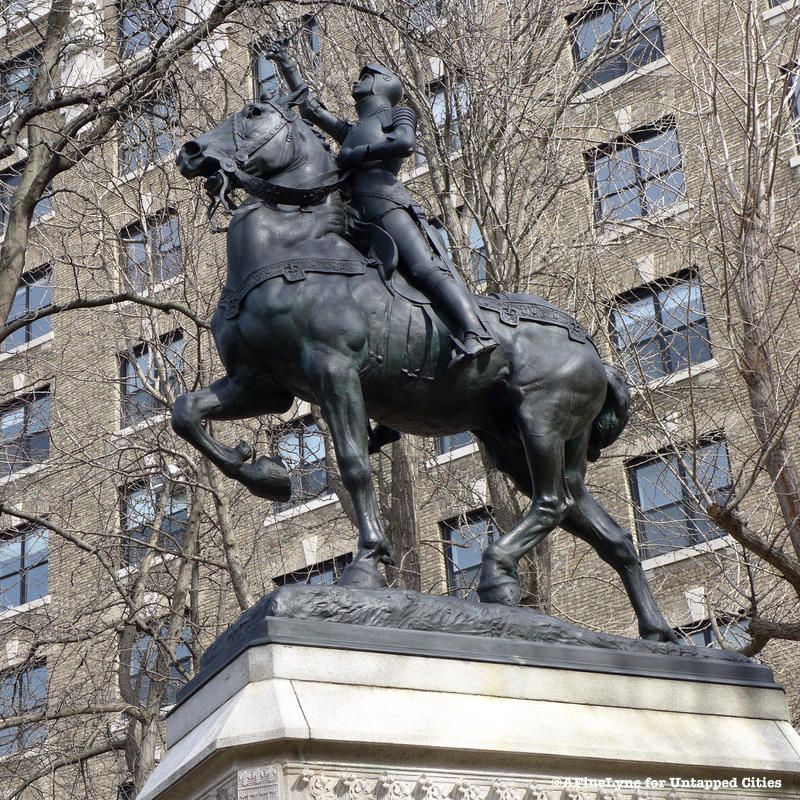
The Joan of Arc Statue, by esteemed artist and patron of the arts Anna Vaughn Hyatt Huntington, was dedicated in 1915. The pedestal was designed by architect John Van Pelt, and even includes a few blocks from the tower that Joan of Arc had been imprisoned in. The statue is located at the top of the steps in Riverside Park at 93rd Street. Architect John Van Pelt planted trees to shield the buildings from the view of the equestrian statue. The statue was part of an Adopt-a-Monument Program in 1987, which was a joint partnership between the Municipal Art Society (MAS), the NYC Department of Parks & Recreation and the Art Commission of the City of New York.
Joan of Arc was a French patriot and martyr, who believed she was chosen by God to join the fight liberating the French from English rule. With zero military training, Joan of Arc lead a French army into the besieged city of Orleans to successfully defeat the English in battle.
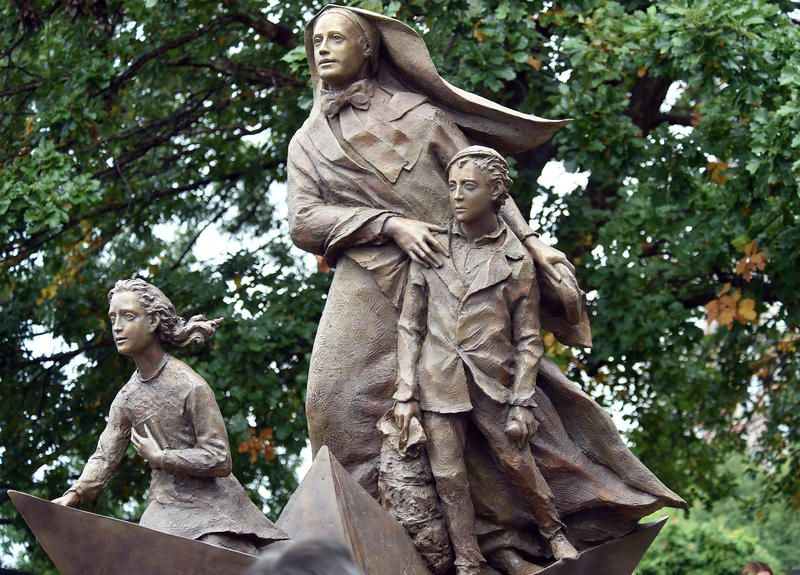
In 2020, a statue in honor of Mother Cabrini was unveiled at The Battery. Located just south of the South Cove on the Battery Park Esplanade, the statue honors the woman who was the first American citizen to be made a saint by the Roman Catholic Church. In her life, Mother Cabrini established hospitals in New York City, Chicago, and Seattle. Originally interred at her orphanage in West Park, New York, after she was canonized on July 7, 1946, her body was exhumed and relocated to the St. Frances Cabrini Shrine in Northern Manhattan, which you can visit today.
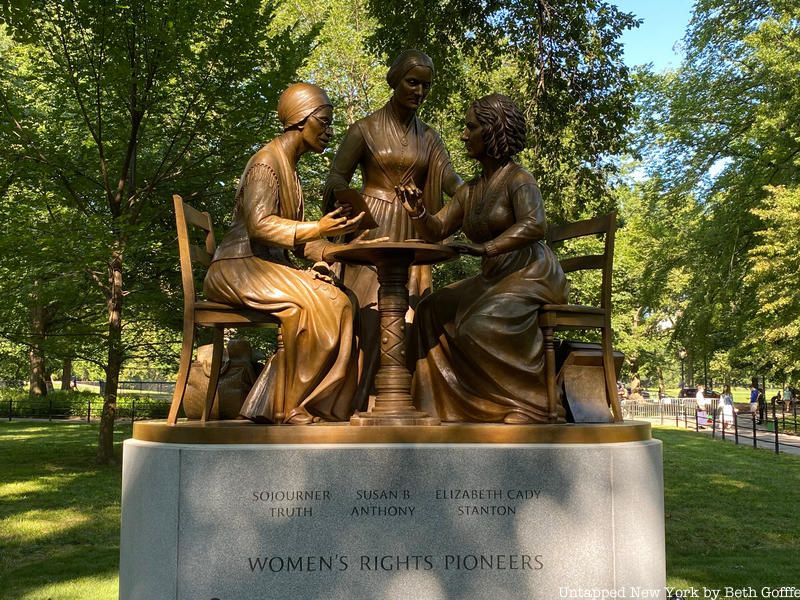
Another recent addition to New York City’s female statuary is the Women’s Rights Pioneers Monument, the first monument in Central Park to ever be dedicated to real women. The statue depicts Sojourner Truth, Elizabeth Cady Stanton, and Susan B. Anthony. It was unveiled in August 2020. Meredith Bergmann was commissioned for the statues designed. Bergmann also designed the bust of Ruth Bader Ginsburg which was recently unveiled at the New York State Capitol building in Albany.
Next, check out 11 New NYC Art Installations Not to Miss This March 2019 and 10 Hidden Places in NYC” Grand Central Terminal!
Subscribe to our newsletter